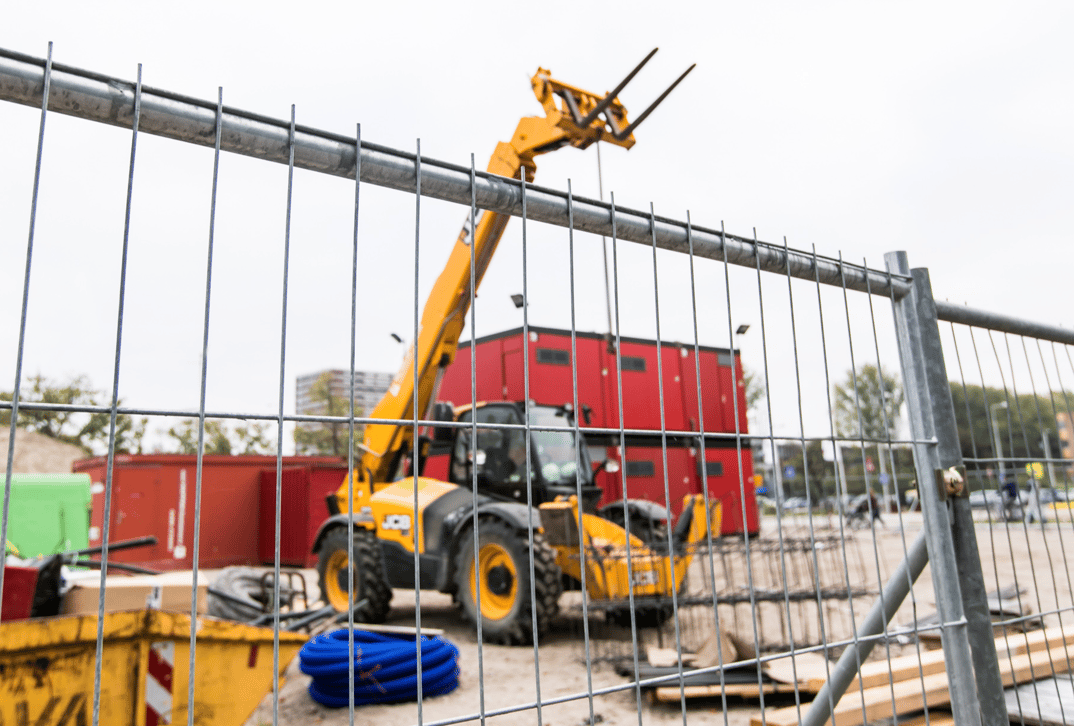One thing is certain… the safety of staff, visitors, and local residents is paramount at every building site. And everything possible should be done to ensure unauthorised people are kept off-site. Mobile fences are indispensable in achieving this goal. But what conditions also play a role in striving to achieve a safe construction process?
What should you pay attention to when selecting the right temporary fence?
Are you looking for temporary fences for your building site? Then you will need to observe a lot of regulations and rules. You need to safeguard safety at and around the terrain, limit the inconvenience to traffic, provide quicker access to suppliers, and prevent crimes. In brief, you will need to juggle a lot of balls. You can swap all of these flies in one fell swoop when you use the right mobile fences and entrance gates at your building site. This ensures that your building site will be safe to work at.
In the article written by our Heras Mobile fencing expert, it is emphasised that: Everything that you do and say must resolutely reflect the simple fact that safety is paramount… safety first. In our opinion, a safe construction process begins with a thorough ‘mobile fence selection process’. What steps should you go through?
Temporary fence selection process for a safe construction process
1. Inventory the initial requirements
When selecting the right type of temporary fence, it is important to ask the following questions:
- Where is the building site?
- What is the situation where the building site is located?
- What are the critical points for the building site?
For each of these question, you focus on one question: ‘How do we ensure that safety is optimal?’
2. Inventory the building site
After answering the above questions, it is time to examine the location. In addition to visiting and visually examining the site in person, you can also use Google Maps as a reference work. It is important that the location, dimensions, and, among other things, the ground is well understood and recorded. Partly based on this info, you can make an initial inventory listing estimates for mobile fences, required work materials, transport routes, and type of vehicles. This creates a personal checklist of the required resources and actions. And this will also prevent nasty surprises at a later time.
3. The ground and other critical items
Logically, the surface on which you will place mobile fences is important during the selection process. This determines the type of mobile fences and anchoring. It is also important to check whether there are hazardous locations at the terrain, such as a construction pit. Ask yourself: ‘What are all of the situations that can happen here?’ Make sure that you are well prepared for these situations and that you have a plan ready ‘just in case’.
4. Access
You want authorised people to feel welcome and keep unauthorised people off-site. It is a matter of finding the right balance between who you want to keep out of your terrain and who want to allow access to. Make sure that employees can do their work and that children, passers-by, and undesirables are kept off-site. You can take appropriate measures once you have identified who the ‘unauthorised’ are and the reasons they want to access the terrain. For example, temporary fences, access gates, and evacuation gates. For example, a swing gate provides direct and spacious access to people and construction traffic, while a sliding gate provides controlled access to the building site.
5. Safety, noise, and view
Consider safety at the location. The type of safety depends on the situation. Do you expect a lot of noise and maybe even a noise nuisance? Then use sound-dampening cloths. This will prevent complaints from local residents and process delays. And, do you want the conceal the terrain from sight? Then use a sheet-piling fence. It bars undesirables, prevents people from being distracted, prevents the mobile fence becoming a bicycle stall, and goods and rubbish are kept out of sight.
6. Requesting temporary fences
You have now clearly identified the necessary and desired requirements for the location and attendant risks. These are the basis for requesting your mobile fences. A temporary fence expert can help you dot I’s and cross the T’s.
The above points needing attention apply to a remote building site as well as a (new) construction project in populated and busy areas. When selecting mobile fences, it is important to consider the differences and available options. We're glad to help you!



